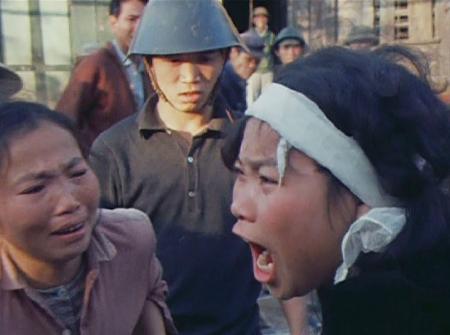Vietnam War: A Visual History Unfolds
The Vietnam War, a conflict that deeply scarred the 20th century, continues to fascinate and horrify in equal measure. Beyond the statistics and political analyses, lies a powerful visual narrative – one that offers a visceral understanding of the human cost and the brutal realities of this protracted struggle. This article delves into the visual history of the Vietnam War, exploring its key photographic moments and their lasting impact.
A Nation Divided: Early Images of Conflict
The initial stages of US involvement in Vietnam, often framed as a battle against communism, were documented through heavily controlled official photography. These images, often carefully staged, presented a sanitized version of the conflict, emphasizing American strength and determination. However, even within these early representations, subtle cracks began to appear, hinting at the complexity and brutality that lay beneath the surface.
Key Images from the Early Years:
- The "Triumphant" Entry: Early photographs depicted American soldiers arriving in Vietnam, projecting an image of confident intervention. However, a closer examination reveals the anxieties lurking beneath the surface, foreshadowing the difficulties to come.
- Propaganda and the Media: Both sides employed propaganda, crafting images to bolster public support. Examining these contrasting narratives offers crucial insight into the differing perspectives of the conflict.
The Turning Point: The Rise of Photojournalism
As the war escalated, the role of photojournalism dramatically shifted. Independent photographers, unburdened by government censorship, began to capture the raw and unflinching reality of the conflict. These images, often stark and emotionally charged, profoundly impacted public opinion both in the US and globally.
Iconic Photographs that Changed Perceptions:
- The Burning Monk: Thich Quang Duc's self-immolation, captured in a powerful photograph, became a symbol of the anti-war movement and exposed the brutality of the regime.
- The Napalm Girl: Nick Ut's photograph of Kim Phuc running naked after a napalm attack remains one of the most iconic and disturbing images of the war, highlighting the devastating human cost of conflict.
- The Execution of a Viet Cong Suspect: Eddie Adams' Pulitzer Prize-winning photograph, while controversial, exposed the brutality of the war and fueled anti-war sentiment.
Beyond the Battlefield: Civilian Life and the Aftermath
The visual history of the Vietnam War extends beyond the battlefield. Images depicting the lives of Vietnamese civilians, both during and after the conflict, offer a powerful counterpoint to the narratives focused solely on military action. These images shed light on the long-term consequences of the war and the enduring struggle for recovery.
Understanding the Civilian Experience:
- Daily Life Under Fire: Photographs reveal the resilience and suffering of Vietnamese civilians living under constant threat of violence.
- The Agent Orange Legacy: Images showcasing the lasting impact of Agent Orange on Vietnamese citizens and future generations are a stark reminder of the devastating consequences of chemical warfare.
- Reconstruction and Recovery: Photographs illustrating the slow and arduous process of rebuilding Vietnam after the war provide a poignant conclusion to the visual narrative.
The Enduring Power of Visual History
The visual record of the Vietnam War serves as a powerful testament to the human cost of conflict. By examining these images, we can gain a deeper understanding of the complexities, contradictions, and enduring consequences of this pivotal moment in history. It's crucial to remember that these images are not just historical documents; they are powerful narratives that demand our attention and reflection.
Further Exploration:
- Explore online archives: Websites like the National Archives and the Library of Congress offer extensive collections of photographs and film footage related to the Vietnam War.
- Visit museums and galleries: Many museums feature exhibitions dedicated to the Vietnam War, offering a valuable opportunity to experience these images firsthand.
- Read books and articles: Numerous books and articles delve deeper into the photographic history of the Vietnam War, providing context and analysis.
This visual history remains a crucial tool for understanding the past and fostering a more peaceful future. Let us use these powerful images to learn from the mistakes of the past and strive for a world free from conflict.
